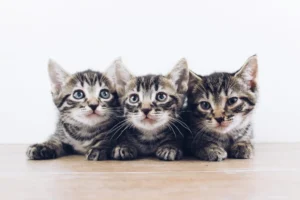Cats are known for their playful and mischievous behavior, and one common target for their antics is toilet paper. But why do cats attack toilet paper? Let’s explore the reasons behind this feline fascination with unravelling rolls of tissue.
Cats are natural hunters and explorers, and the movement and rustling sound of toilet paper can trigger their predatory instincts. In the wild, cats would stalk and pounce on small prey, and the rolling toilet paper mimics this behavior, making it an irresistible target for play.
Curiosity and Playfulness
Cats are known for their curiosity and playful nature, which often leads them to attack toilet paper rolls. The crinkly sound and easy unraveling of the paper can be highly enticing to our feline friends, sparking a sense of adventure and fun. It’s like a never-ending game of unraveling mystery to them, providing mental stimulation and entertainment.
Additionally, cats have an innate instinct to hunt and play with prey, and a toilet paper roll can mimic this behavior. The act of batting at the roll and watching it spin can simulate the thrill of catching a moving object, satisfying their natural hunting instincts. So, next time you catch your cat in the act, remember they’re just following their playful instincts!
Stress Relief
Believe it or not, attacking toilet paper may also serve as a stress-relief mechanism for cats. Just like how we humans might squeeze a stress ball or go for a run to blow off steam, cats may find solace in unraveling that innocent roll in your bathroom. It allows them to release pent-up energy or frustration, providing an outlet for any built-up tension.
Moreover, the act of destroying something as soft and fluffy as toilet paper can be therapeutic for cats, giving them a sense of control and accomplishment. This can be particularly helpful for cats who may be feeling anxious or bored. So, don’t be too quick to scold your furry friend for their toilet paper antics; they may just be in need of some stress relief.
Sensory Stimulation
When it comes to understanding why cats are so drawn to attacking toilet paper, we need to consider the sensory stimulation it provides for our feline friends.
Texture : Cats have sensitive paw pads that can pick up on the unique texture of toilet paper. The soft and crinkly feel of the paper can be engaging for them to scratch and tear apart.
Smell : Believe it or not, cats have a keen sense of smell, and the scent of the paper may intrigue them. It’s a new and interesting odor that they want to investigate further.
Sound : The crinkle of toilet paper can be highly stimulating for cats. The rustling noise as they play with it can capture their attention and keep them entertained for hours.
By understanding how these sensory aspects appeal to cats, we can better grasp why they find toilet paper so irresistible to play with.
Behavioral Conditioning
Why do cats attack toilet paper? It may be due to behavioral conditioning, a concept that plays a significant role in shaping our pets’ actions.
Cats are intelligent creatures that learn through experiences. They may have associated the sight of toilet paper with a fun and rewarding activity, such as unravelling and shredding it. This behavior might have been reinforced positively each time they engaged with the toilet paper.
Moreover, cats are natural hunters and enjoy chasing and playing with moving objects. The motion of the toilet paper as they unravel it can trigger their hunting instincts, leading to playful attacks on the paper.
By considering the role of behavioral conditioning in your cat’s fascination with toilet paper, you can adapt their environment to encourage more suitable and engaging play behaviors.
Alternative Toys and Activities
Cats attacking toilet paper can be a frustrating behavior, but there are ways to redirect their energy towards more suitable toys. Try introducing interactive toys like feather wands or laser pointers to engage your cat in a more appropriate play. Additionally, providing catnip toys or puzzle feeders can help fulfill their hunting instincts without destroying your bathroom supplies. Remember, a tired cat is a happy cat, so ensure they have plenty of opportunities to play and pounce throughout the day.
Environmental Enrichment
Creating a stimulating environment for your cat is key to preventing them from targeting your toilet paper. Invest in scratching posts to satisfy their natural urge to scratch and a cat tree for climbing and observation. Interactive toys like automated laser pointers or food puzzles can keep them mentally engaged and physically active. By offering a variety of activities, you can help your cat channel their energy in a positive way and reduce destructive behaviors.
One additional unique insight: Consider setting up a window perch for your cat to watch birds and squirrels outside. This can provide mental stimulation and entertainment, reducing their interest in toilet paper.
Training and Redirecting Behavior
If your feline friend has a knack for attacking toilet paper, fear not! There are ways to train them and redirect their behavior towards more acceptable outlets. One effective method is providing them with plenty of interactive toys and scratching posts to keep them entertained and engaged. By engaging your cat in playtime regularly, you can help redirect their energy away from the allure of unraveling toilet paper rolls. Additionally, using deterrents like double-sided tape on the toilet paper roll or keeping the bathroom door closed can help break the habit. Remember, consistency is key when training your cat, so be patient and persistent in your efforts.
Tips for Training and Redirecting Behavior:
- Provide interactive toys and scratching posts.
- Engage your cat in regular playtime sessions.
- Use deterrents like double-sided tape or closed bathroom doors.
Consulting a Veterinarian
If your cat’s obsession with attacking toilet paper becomes a persistent or destructive behavior, it may be time to seek professional help. Consulting a veterinarian or animal behaviorist can provide valuable insights into the underlying reasons for your cat’s behavior. They can offer personalized advice on how to address the issue and help create a plan to modify your cat’s behavior effectively. Remember, your veterinarian is there to support you and your furry companion, so don’t hesitate to reach out for assistance when needed.
For more information on cat behavior and training, you can consult the American Association of Feline Practitioners website at aafp.org.
Whether your cat sees toilet paper as a source of entertainment, stress relief, or simply a target for their natural instincts, understanding their behavior is the first step towards finding a solution. By implementing training techniques and seeking professional guidance when necessary, you can help your cat lead a happy and fulfilled life.
Alex, a passionate animal lover, has experience in training and understanding animal behavior. As a proud pet parent to two dogs and three cats, he founded AnimalReport.net to share insights from animal experts and expand his knowledge of the animal kingdom.




